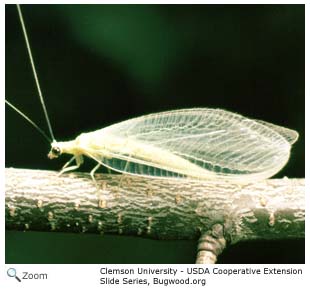Most species hold their wings over their abdomen in a tent shape. Most species have long, thin antennae and biting and chewing mouth parts. Like all insects, they have six legs. The larvae in this order are sometimes known as antlions. They are carnivorous and have biting or sucking mouthparts that they use to capture and eat their prey. Adults are also carnivorous, but many species also eat nectar. |
||||||||||

